HIER NEHM ICH PLATZ
This project reinterprets the aftabeh, a traditional copper vessel for washing, by transforming it from a hidden everyday tool into a visible piece of furniture. A specially designed pedestal elevates the aftabeh both physically and symbolically, removing it from the “gross area” of the bathroom floor. Inspired by Persian carpets and their ornamental forms, the design incorporates cultural motifs and a warm color palette. Through this, the aftabeh becomes a permanent, dignified object that reflects cultural belonging while reshaping perceptions of hygiene and space.
Thank you to Anna Luisa Richter for the pictures.
www.instagram.com/annaluisarichter/
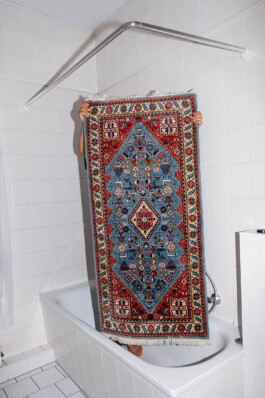
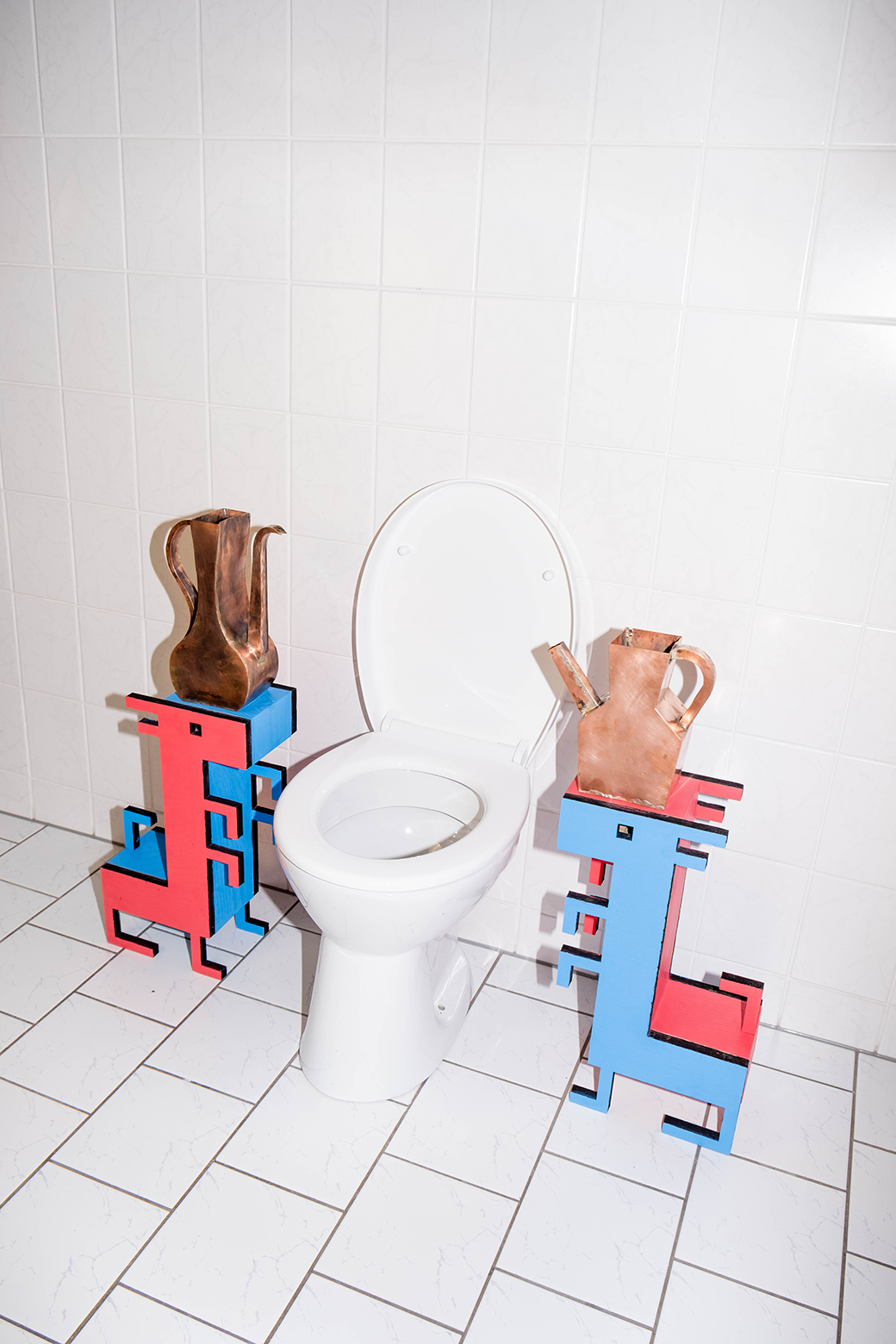
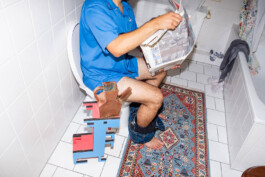
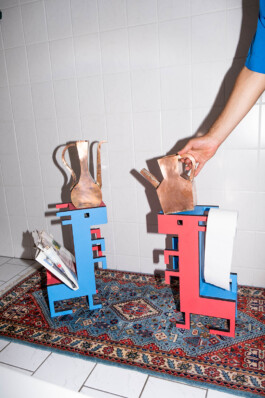
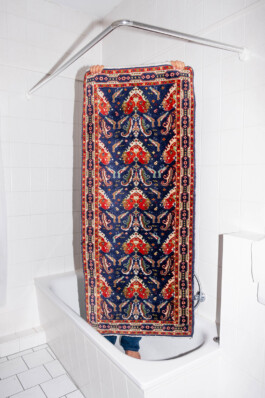
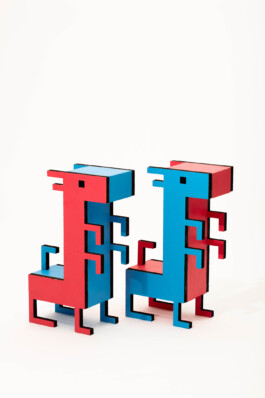
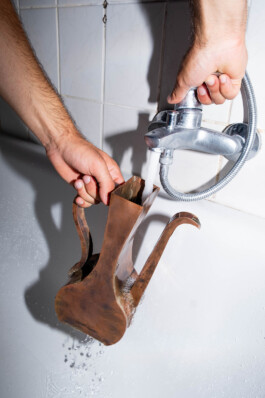
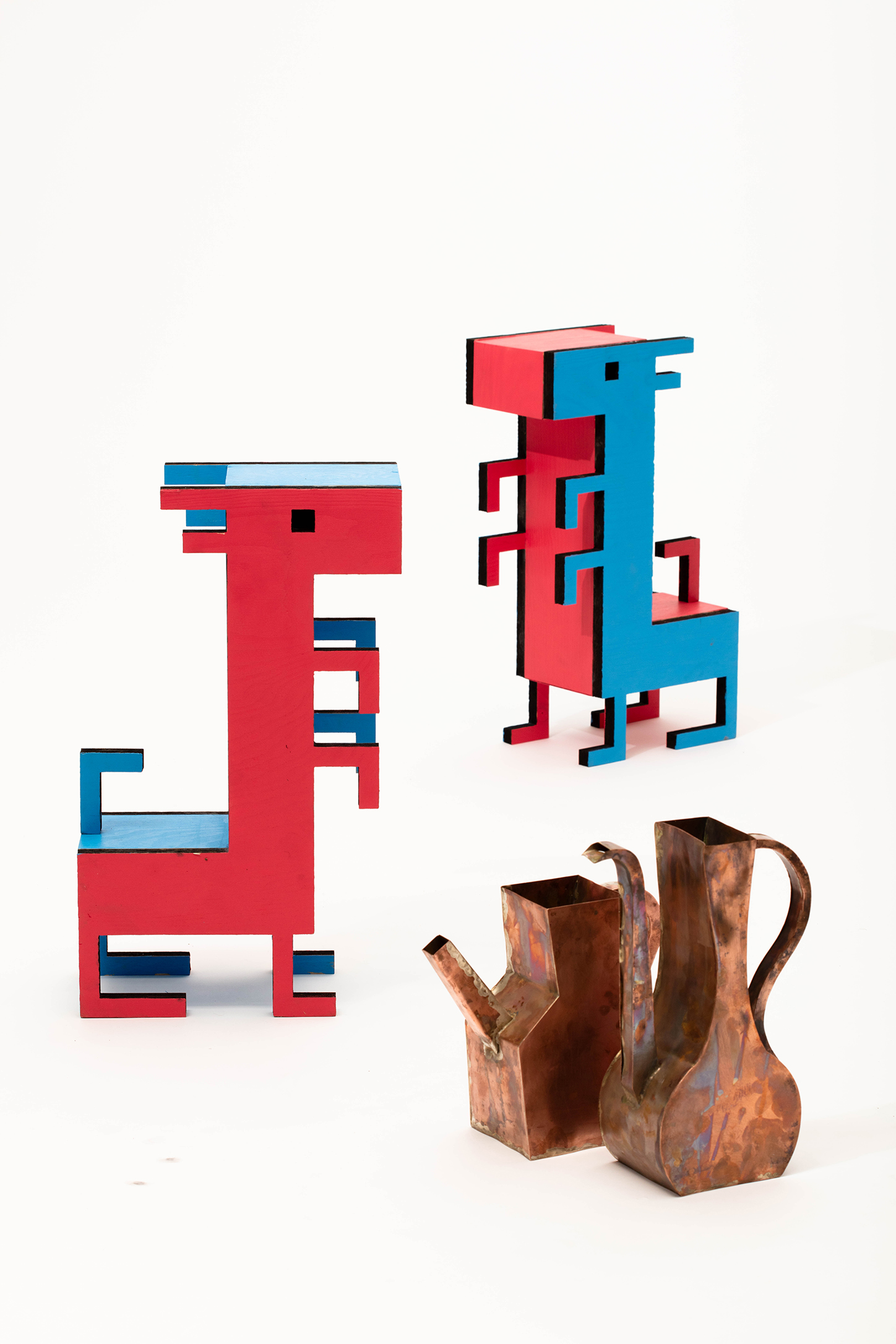
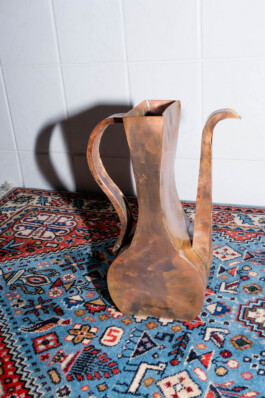
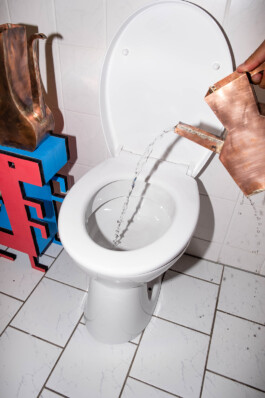
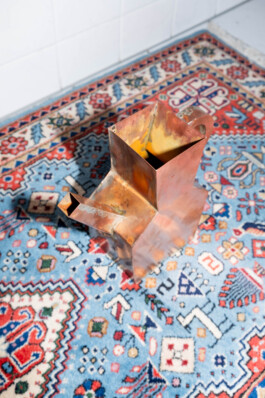
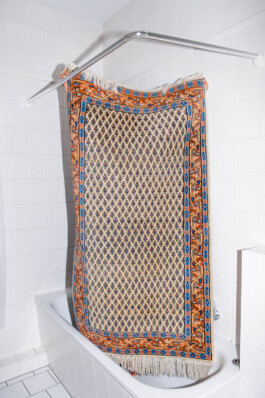
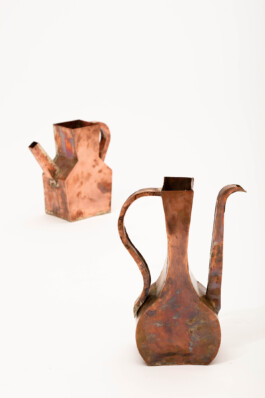
The aftabeh (Farsi: a watering can used for washing oneself on the toilet) has accompanied me throughout my life, as a functional everyday object, as a custom, and also as a symbol of cultural difference. Early on, I realized that this seemingly mundane object is about much more than just hygiene: it's about space, about where something is allowed to be and where it isn't. It's about cultural belonging, about bringing practices with you and adapting them. And it's about visibility, or invisibility, in everyday
spaces that don't seem designed for it.
Although the aftabeh was a natural part of my home, I always felt that something was wrong with this custom. Perhaps it was because we repurposed different watering cans for it, as we never had one specifically made for it. One thing is clear: the aftabeh seemed somehow out of place under the toilet, on the floor, visible and invisible at the same time. Because whereas in many parts of the world anal hygiene with water is a matter of routine, in Germany toilet paper is the first choice. Visitors to these mostly migrant households are therefore puzzled as to why there is a watering can next to the toilet.
“Funny that you keep your watering can in the bathroom.”
Because with our sitting toilets, everything below the toilet is a “ gross area,” where you’ll find not only the toilet brush, but also dust or puddles of various liquids. And yet people still put their watering cans there. Because there’s no place else for them. This leads to the object being overlooked and also becoming “gross.”
In response to this misunderstood object, I tried to design my own watering can. But after much consideration, I came to the conclusion that I should not see this object as a watering can, but as a piece of furniture. A piece of furniture that elevates the watering can physically and symbolically: it is no longer something that has to stand on the floor, that crouches or is merely tolerated.
In my design, I also turned to my parents' home, because my parents passed this custom on to me. In addition to food, stories, and dance, it was above all the carpets that remained formative influences. For me, they were always more than mere home decorations.
They are a physical expression of a culture that is part of my
identity. The ornaments on these carpets, which originated in Iran, are now in our home in Germany. Here, I reinterpret them freely and personally. This exploration gave rise to a form: a small
animal that I developed further and ultimately designed so that it could carry my aftabeh. The color palette of the carpet also found its way into my design, as a reference to the world from which this custom originates.
This has become my pedestal, giving the aftabeh a permanent place in the bathroom.
It was important to me to engage intensively with the aftabeh, its function, its history, and its cultural significance. I made my version of the aftabeh out of copper, in keeping with traditional aftabehs as they were often used in the past. The pedestal creates a space in which the use of the aftabeh is visible, conscious, and self-evident to people.
The project deals with questions of space, cultural belonging, and silent visibility. It makes an overlooked object visible.